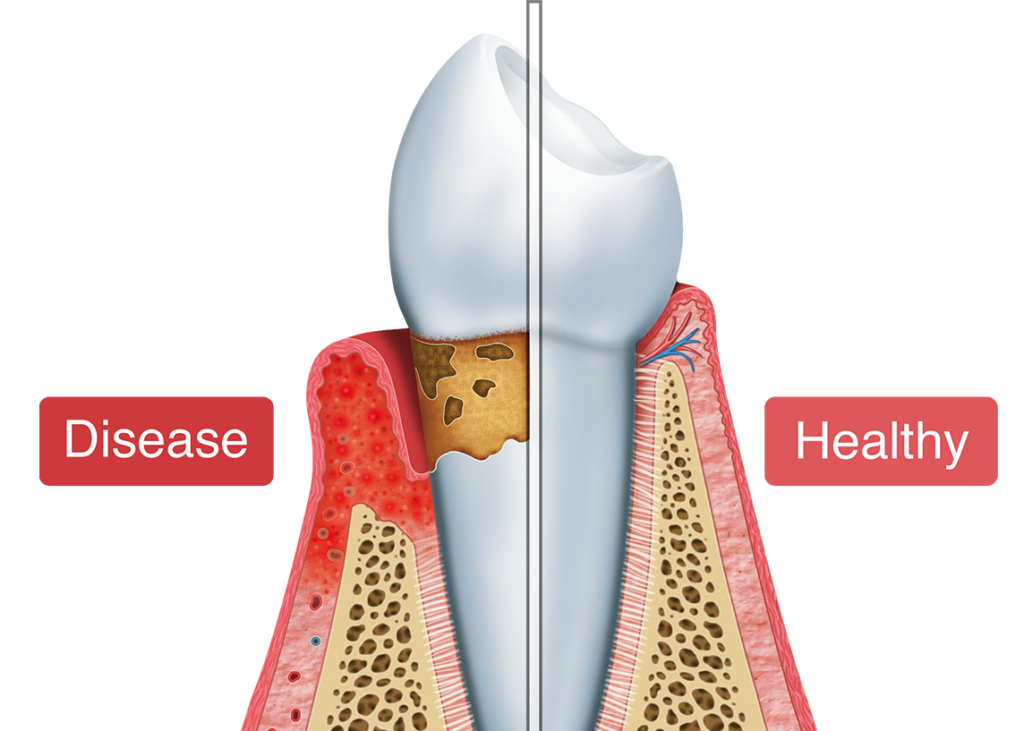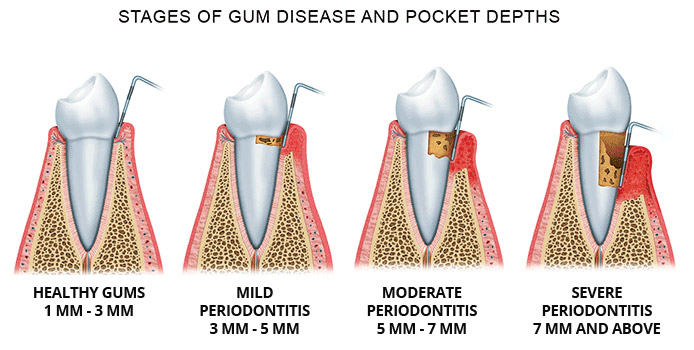A periodontal examination refers to the part of a dental exam where our staff evaluates your gums and overall bone health. The “periodontium” refers to the gums and the bone in the jaw that supports the teeth. As part of a comprehensive dental exam, your periodontal health is evaluated. A number of factors weigh in to a proper periodontal diagnosis. After a diagnosis is made, a treatment and maintenance plan can be made.
A thorough periodontal examination includes the following:
- Periodontal probings
- Identification of the presense of missing teeth
- Identification of the presense of bleeding gums
- Identification of the presense of gum recession
- Identification of the presence of mobile (loose) teeth
- Radiographic (X-Ray) evaluation of the bone levels around teeth
- A review of a patient’s medical history and lifestyle habits

What is the Primary Purpose of a Periodontal Examination?
The primary purpose of our periodontal examination is to identify the presense and progression of periodontal disease (gum disease) which is the leading cause of tooth loss for patients over 40 years old. Periodontal disease is a multifactorial disease that results in the loss of bone and attachment to one or more teeth in the mouth. As the disease progresses, ultimately teeth can become loose and can eventually be lost.
What is Gingivitis and its Link to Periodontal Disease?
Gingivitis is often considered to be the precursor to periodontal disease however if gingivitis is caught and treated early, it won’t necesarrily turn into periodontitis. Gingivitis referes to the reversible bacterial irritation of the gums. This irritation results in red and swollen gums that bleed when a patient brushes or flosses. The irritation and swelling is caused by bacteria that is living under the gums. Gingivitis is reversible meaning that after the bacteria is removed, the gums will return to normal and there is no permement loss of bone or attachment. If gingivitis is not caught and treated early, and the patient presents with contributing medical or lifestyle conditions, periodontal disease can develop. Periodontal disease results in permement attachment loss in one or more teeth.
What are Periodontal Probings and Why are They Important?
Periodontal probings are data recorded and charted during a periodontal exam. The probings are taken using a dental instrument called a “perio probe”. Each tooth gets 6 measurements during each exam. Signs of gingival health include probings that do not cause the gums to bleed and are not uncomfortable to the patient. Probing depths range between 1-3mm at each site. Probing depths of 1-3mm mean the gums are not inflamed and there is no bone loss around the teeth. Signs of periodontal disease result in probing depths of greater than 3mm and may result in bleeding at the site of probing. As periodontal disease progresses the bone receeeds around the teeth. As the bone receeds the probe is able to progress deeper resulting in larger measurements. These larger measurements are an indication of periodontal bone and attachment loss. The periodontal measurements taken during a periodontal exam are kept in the patients chart so the progression of the disease can be monitored.


